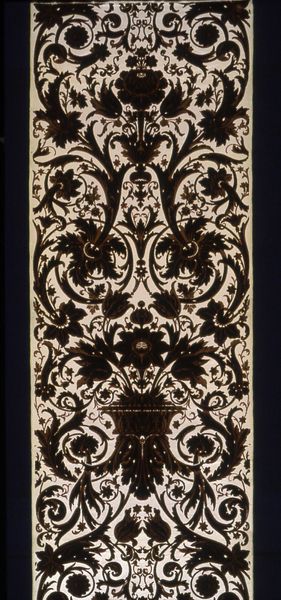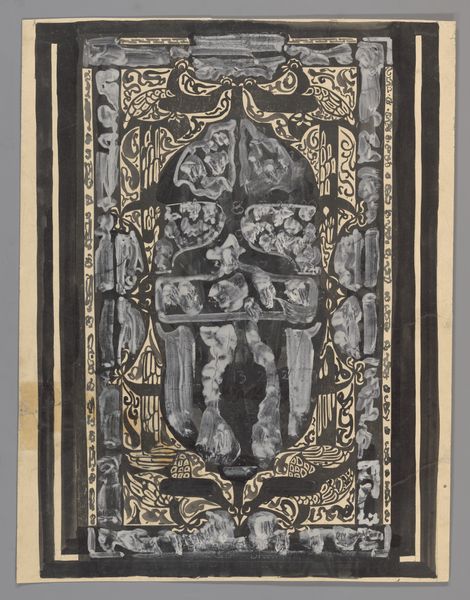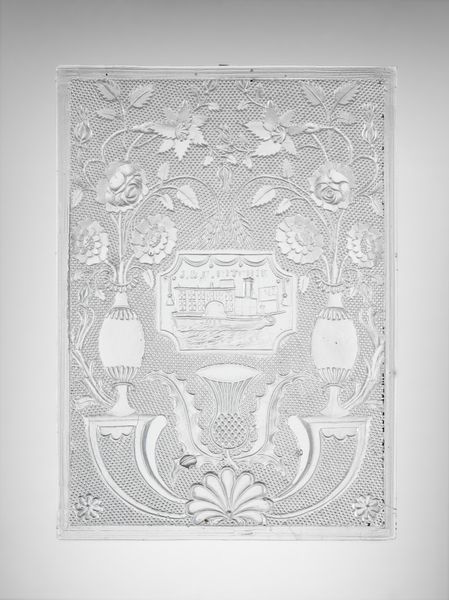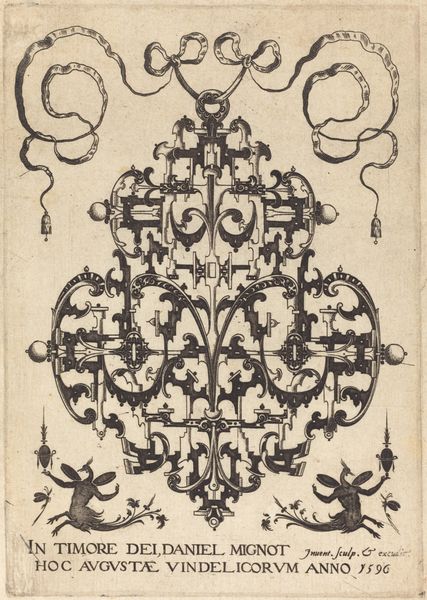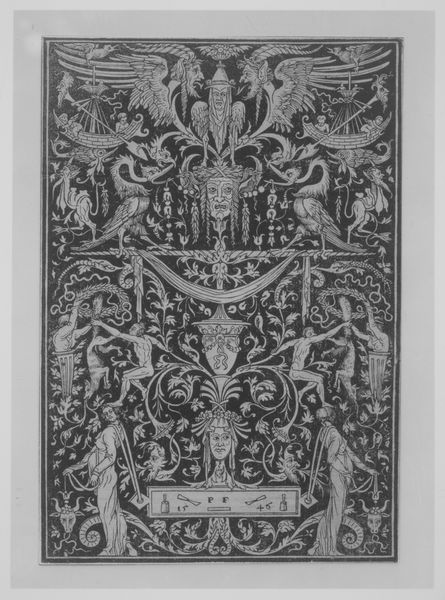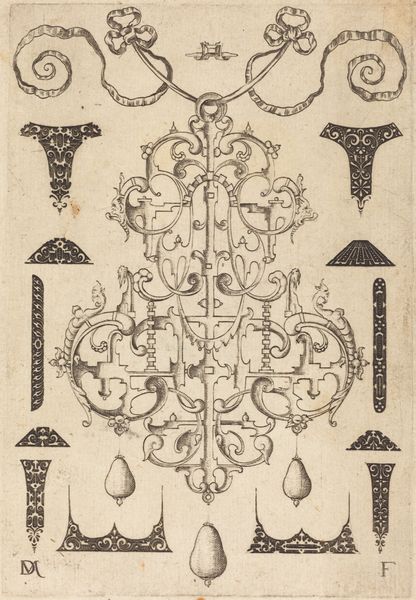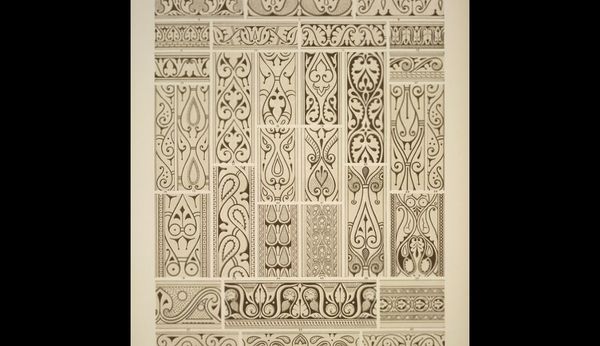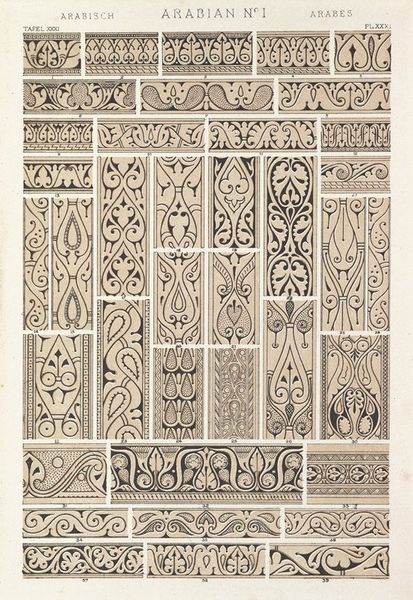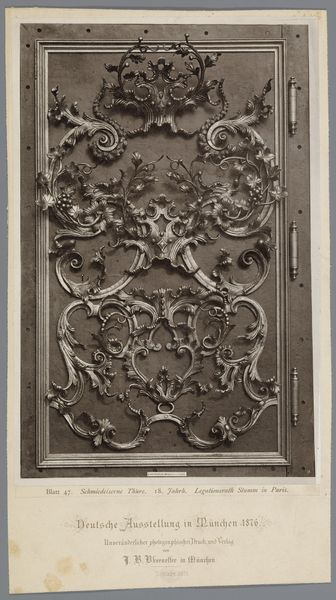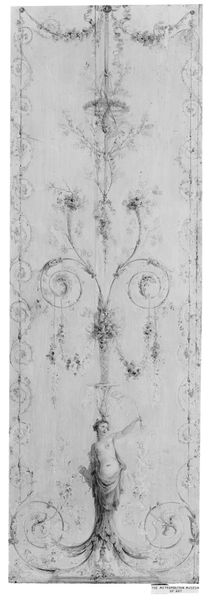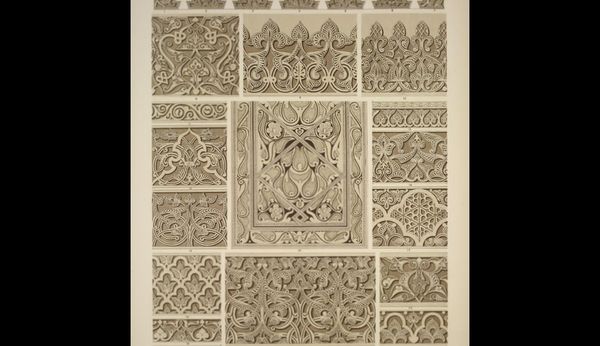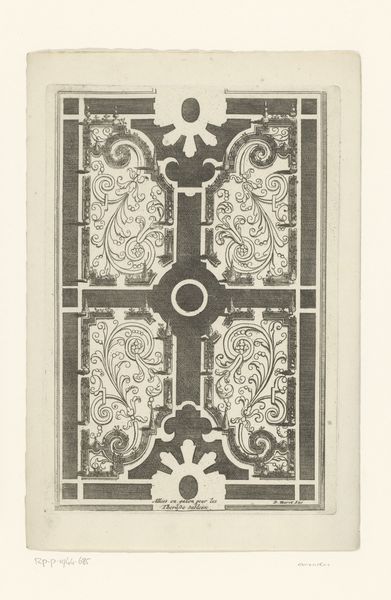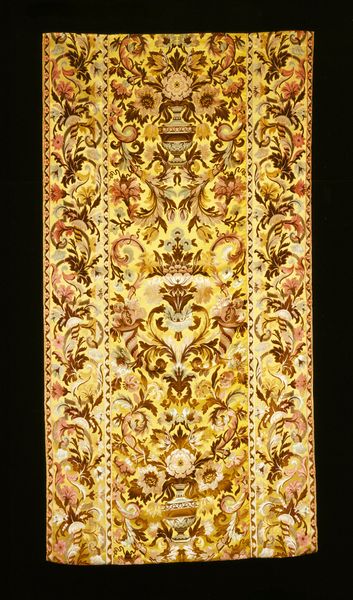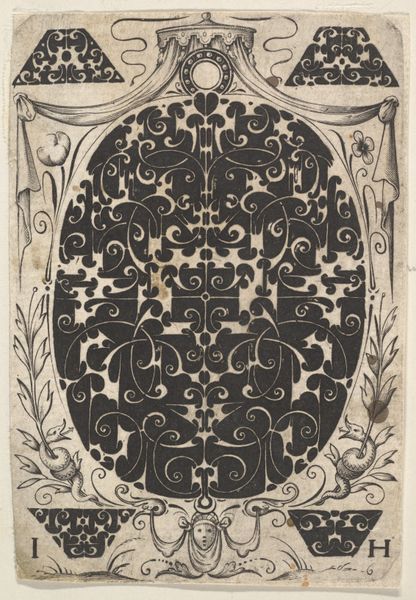
Dimensions: 40 5/16 x 22 1/2 x 3/8 in. (102.39 x 57.15 x 0.95 cm)
Copyright: No Copyright - United States
This cast of a teller's wicket was created by Louis Henri Sullivan; I'm not sure when, or with what specific materials, but the patterns and shapes are what grab me. The whole thing feels like a puzzle, a process of fitting together organic shapes with rigid lines. Looking at the metalwork, I see all this ornamentation, like a garden gone wild! There's a tension between the solid metal and the airy, open spaces, like a dance between control and letting go. My eye keeps getting drawn to the upper corners, these stylized floral motifs, like they're reaching out, trying to escape the frame. They remind me a bit of Art Nouveau, with its love of swirling lines and natural forms, but there's something more architectural here, more structured. Sullivan was doing his own thing, blending nature and geometry, and making something totally unique. It feels like he was trying to find a new way of seeing the world, and inviting us to come along for the ride.
Comments
minneapolisinstituteofart about 2 years ago
⋮
The original seven teller wickets in the National Farmers’ Bank banking room were removed during renovations in 1929 and 1940. So far as is known, none survive. This cast is one of three made by Jerry Bonnette in 1967 from an eighth wicket, given by the manufacturer to the Art Institute of Chicago in 1908. Though once removed from the original, it clearly shows the skill Elmslie contributed to the bank’s elaborate decorative scheme. The wicket’s geometric, rectilinear framework is overlaid with scrolling curves and organic designs of pods, leaves, and berries. The abstracted, highly detailed natural forms are meant to be seen and appreciated at close range. In contrast, a cast iron panel for the Woodbury County Courthouse (also in this gallery), with simpler, bolder abstraction, was meant to be viewed from a distance.
Join the conversation
Join millions of artists and users on Artera today and experience the ultimate creative platform.
